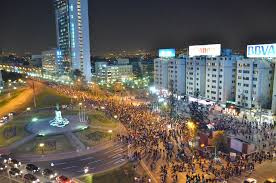Is Santiago a city of high altitude?

Is Santiago a city of high altitude?
Is Santiago a city of high altitude? Santiago is the capital city of Chile, located within a valley surrounded by the majestic Andes mountains.
While not considered extremely high in altitude, its location does give it a unique geography.
Altitude of Santiago
Santiago sits at approximately 520 meters (1,700 feet) above sea level. While not considered a high-altitude city, it is still surrounded by mountains, which contribute to its unique geographic location.
Location in the Central Valley
Santiago is situated in Chile’s Central Valley, a large basin surrounded by the Andes to the east. This valley’s altitude is relatively moderate compared to other high-altitude cities in the world.
Influence of the Andes Mountains
The city’s location at the foothills of the Andes mountains means it experiences a mix of temperatures and weather patterns. Though not at a high altitude, the surrounding mountains influence the city’s climate.
Effects on Breathing
At 520 meters above sea level, Santiago’s altitude does not typically cause breathing difficulties for most people. However, those arriving from significantly lower altitudes might experience mild shortness of breath upon arrival.
Proximity to Higher Altitudes
While Santiago itself is not at a high elevation, it is located just an hour’s drive from higher altitudes. The nearby Andes mountains rise to over 6,000 meters, creating spectacular views.
Access to Ski Resorts
The relatively moderate altitude of Santiago makes it an ideal gateway to ski resorts in the Andes mountains. Skiing and snowboarding are popular activities in winter, with resorts just a short drive away.
Influence on Air Quality
The altitude of Santiago combined with its geographical setting can lead to air quality issues, especially in winter months. The surrounding mountains can trap pollution, causing hazy conditions in the city.
Elevation and Weather Patterns
Santiago’s moderate altitude affects its weather, creating a Mediterranean climate with hot summers and mild winters. The surrounding mountains cause temperature fluctuations, contributing to weather variability in the region.
Travel to High Altitudes
Visitors to Santiago can easily access much higher altitudes, such as the Andes mountain range, which offers a stark contrast to the city’s lower elevation. High-altitude destinations are popular for adventure tourism.
Adjustment to Altitude
Most travelers adjust quickly to Santiago’s elevation of 520 meters. However, those coming from sea-level cities might experience minor symptoms like mild fatigue or slight headaches, which usually subside after a day.
Mountain Views and Recreation
Despite its moderate altitude, Santiago is renowned for its stunning mountain views. The nearby Andes offer numerous recreational opportunities, from hiking and mountain biking to winter sports, attracting outdoor enthusiasts year-round.
Impact on Santiago’s Infrastructure
The altitude of Santiago plays a role in the city’s urban planning. The infrastructure must accommodate the steep slopes surrounding the city, especially in neighborhoods located closer to the Andes foothills.
Effect on Vegetation
Santiago’s moderate altitude also influences the types of vegetation found in and around the city. The climate is conducive to a variety of plant life, including vineyards, fruit trees, and hardy shrubs.
Elevation and Wine Production
Santiago’s location within the Central Valley is ideal for wine production. The moderate altitude combined with a Mediterranean climate makes the region famous for producing world-class wines, particularly red varieties.
High-Altitude Cities Comparison
Compared to high-altitude cities like La Paz or Quito, Santiago’s elevation is relatively low. While these cities are situated thousands of meters above sea level, Santiago remains comfortably at a moderate, accessible height.



Leave a Reply